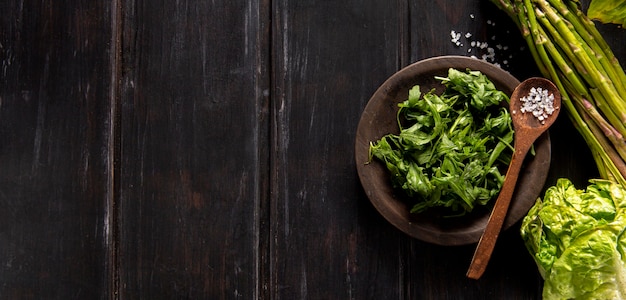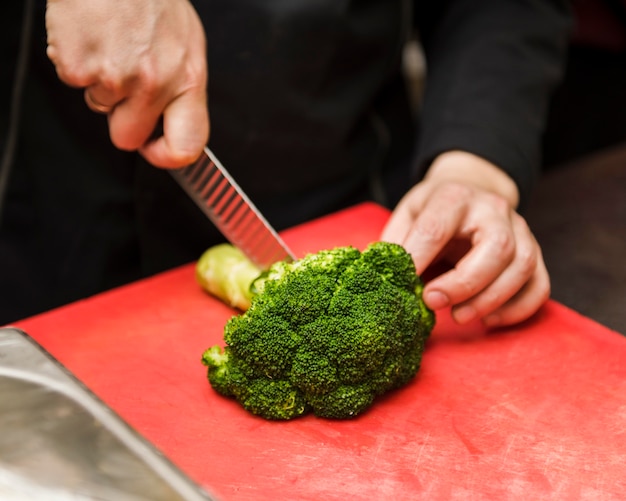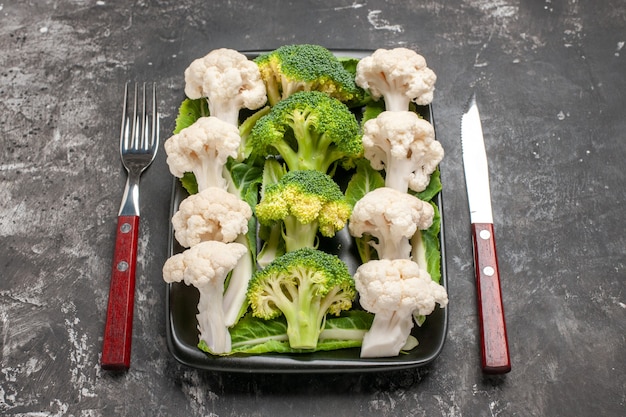Let's talk about broccoli rabe. You might know it as rapini, or even broccoli raab. But no matter what you call it, this green leafy vegetable is a real winner. It’s like the best of both worlds: the tender florets of broccoli and the slightly bitter, peppery leaves that add a delightful zing. You can easily add it to any meal, and it's honestly a bit of a hidden gem. I mean, it’s not as well-known as spinach, but it really should be!
My first experience with broccoli rabe was a revelation. My mum was whipping up a pasta dish, and she tossed in a bunch of this green stuff. I was a little hesitant, to be honest. It looked a bit like the weeds that used to sprout in our garden! But then, I took a bite, and wow, it was incredible! The bitterness of the leaves balanced out the sweetness of the broccoli, and the whole thing was just delicious. From that day on, I was hooked.
Now, I’m no Michelin-star chef, but I’ve spent a fair bit of time in the kitchen, and I’ve learned a thing or two about cooking broccoli rabe. I’m going to share everything I know with you. We’ll cover how to choose the best broccoli rabe, how to prep it, how to cook it, and of course, some of my favourite ways to eat it. So, grab your apron and let's get cooking!
(Part 1) Choosing the Right Broccoli Rabe

1. Freshness is Everything
The first step is finding some good quality broccoli rabe. Freshness is absolutely key. You want stems that are a vibrant green, firm, and crisp. The leaves should be free from any wilting or yellowing. And, of course, make sure there aren’t any obvious signs of damage or decay.
2. Avoiding That Bitter Bite
Now, let’s talk about that bitterness everyone talks about. It’s not actually inherent to broccoli rabe, but it can become more pronounced if the vegetable isn’t fresh. To avoid that, look for broccoli rabe with a vibrant green colour. If the colour is duller, it's likely not as fresh.
3. The Perfect Stalk Size
Another thing to consider is the stalk size. You want stalks that are medium in thickness – not too thin, not too thick. Thin stalks can be a bit woody, and thick ones can be a little tough. Aim for a happy medium there.
(Part 2) Prepping Broccoli Rabe

1. Trimming the Stems
Now, let’s get down to prepping your broccoli rabe. First, you’ll want to trim the tough ends of the stems. I usually cut them off a few inches below the florets. Nobody wants to bite into a woody stem, right? So, trim those off.
2. Washing and Drying
Next, you’ll want to give your broccoli rabe a good wash. Just dunk it in a bowl of cold water and give it a gentle swish. Then, make sure to dry it thoroughly. Nobody likes soggy vegetables, do they? So, get rid of all that excess water.
3. Preparing for Cooking
You can cook it whole, or you can chop it up a bit. It really depends on what you're making. If you’re adding it to a pasta dish, you might want to chop it up into smaller pieces. Or, if you’re roasting it, you can leave it whole. It’s up to you.
(Part 3) cooking broccoli rabe

1. Blanching for Brilliance
There are a few ways to cook broccoli rabe, but my favourite is blanching. It's a quick and easy method that cooks the vegetable through without making it too soft. So, you simply bring a large pot of salted water to a boil. Then, you add the broccoli rabe to the boiling water and let it cook for about two to three minutes. You want to ensure it’s cooked through but still vibrant green.
2. The Ice Water Shock
Now, here’s the important part: once it’s cooked, you need to immediately remove it from the boiling water and plunge it into a bowl of ice water. This is called shocking, and it stops the cooking process. It also helps keep the broccoli rabe from turning mushy, which is crucial!
3. Sautéing to Perfection
After shocking the broccoli rabe, drain it well and pat it dry. Then, you can sauté it in a bit of olive oil or butter with some garlic and red pepper flakes. This is a simple and delicious way to cook it.
(Part 4) Alternative Cooking Methods
1. Roasting for a Crispy Delight
Of course, you can cook it other ways too. You can roast it. Just toss it with some olive oil, salt, and pepper, then spread it on a baking sheet. Bake it at 400°F for about 15-20 minutes, or until it’s tender and slightly browned. Roasting brings out a lovely crispness, especially in the leaves.
2. Steaming for Subtle Flavor
You can also steam it. Just place the broccoli rabe in a steamer basket, set it over boiling water, and steam it for about 5-7 minutes. Steaming keeps the broccoli rabe nice and green, and it doesn't require any oil.
3. Stir-frying for Speed
If you're in a rush, you can stir-fry it. Just heat some oil in a wok or a large skillet, add the broccoli rabe, and stir-fry it for about 5 minutes, or until it's tender and slightly crispy. You can add some garlic, ginger, and soy sauce to the stir-fry for extra flavor. It’s a quick and easy way to get dinner on the table.
(Part 5) Using Broccoli Rabe in Recipes
Now for the fun part. There are so many ways to use broccoli rabe in your recipes. It's incredibly versatile. Here are a few ideas to get you started:
- pasta dishes: Broccoli rabe is a classic addition to pasta dishes. I love to sauté it with garlic and olive oil, then toss it with pasta and a simple tomato sauce. It’s a traditional Italian dish.
- Salads: You can add chopped broccoli rabe to salads for a bit of bitterness and crunch. It blends beautifully with other greens, like spinach and kale, and is delicious with roasted vegetables and nuts.
- pizza toppings: Broccoli rabe makes a fantastic pizza topping. I enjoy it with a simple garlic and oil sauce, or you can get more creative with things like sausage and ricotta.
- Stir-fries: It's a wonderful addition to stir-fries. You can stir-fry it with tofu, chicken, or shrimp, or add it to a veggie stir-fry. It adds a delightful bitter and salty flavor to the dish.
- Soup: You can even add broccoli rabe to soup. It goes well with minestrone, vegetable soup, and even a creamy broccoli soup.
(Part 6) Tips for Cooking Broccoli Rabe
So, you’re probably thinking, “Great! This all sounds amazing! I can cook this at home now!” And you can! But here are a few tips to make sure you get it right:
- Don't Overcook It: You don't want to overcook broccoli rabe, or it will become mushy and lose its flavor. Just cook it until it's tender but still bright green.
- Season It Well: Broccoli rabe has a slightly bitter flavor, so it's important to season it well. Use salt, pepper, garlic, red pepper flakes, and lemon juice to add flavor. You could even add some grated parmesan cheese for a bit of cheesy richness.
- Don't Be Afraid to Experiment: Broccoli rabe is a versatile vegetable, so don't be afraid to experiment with different recipes and cooking methods. Try it with different sauces, spices, and toppings.
(Part 7) Nutritional Benefits of Broccoli Rabe
It’s not just tasty, it’s good for you! Broccoli rabe is a good source of vitamins and minerals, including vitamins A, C, and K, as well as calcium and iron. It's also a good source of fibre and antioxidants, so it’s good for your digestion and overall health.
(Part 8) Storage Tips
1. Refrigerator Storage
Once you’ve got your broccoli rabe home, you want to store it properly. If you’re not going to use it right away, wrap it in a damp paper towel and store it in a plastic bag in the fridge. This way, it stays fresh.
2. Freezing Broccoli Rabe
If you want to keep it for even longer, you can freeze it. Just blanch it first, then drain it well and spread it on a baking sheet lined with parchment paper. Freeze it for about an hour, then transfer it to a freezer-safe bag. Broccoli rabe freezes well and can be used in soups, stews, and stir-fries.
(Part 9) FAQ
Alright, I’m sure you’ve got some questions. Let’s get to it!
1. How do you know if broccoli rabe is bad?
You know broccoli rabe has gone bad when it starts to turn yellow or brown. The leaves will also start to wilt. If you see any of these signs, it’s best to throw it out.
2. Is broccoli rabe the same as broccoli?
Although they look similar, broccoli rabe and broccoli are different vegetables. Broccoli rabe has a slightly bitter flavour, while broccoli is sweeter. They also have different textures. Broccoli rabe is a bit more tender, while broccoli is firmer.
3. Can you eat the stems of broccoli rabe?
You can eat the stems of broccoli rabe, but you'll want to trim the tough ends. The stems have a bit more of a bitter flavour than the leaves, but they are still edible.
4. How long does broccoli rabe last?
Broccoli rabe is a fresh vegetable, so it doesn’t last very long. If you store it properly in the fridge, it should last for about a week. But if you see any signs of wilting or yellowing, it's best to throw it out.
5. Is broccoli rabe good for you?
Yes, broccoli rabe is good for you. It’s packed with nutrients, including vitamins, minerals, and antioxidants. So, go ahead and enjoy it!
(Part 10) A Little Extra Inspiration
To give you a bit more inspiration, here’s a simple recipe that highlights the deliciousness of broccoli rabe:
Broccoli Rabe and Garlic Pasta
Ingredients:
- 1 pound pasta (your favourite kind)
- 1 bunch broccoli rabe, trimmed and chopped
- 3 cloves garlic, minced
- 1/4 cup olive oil
- 1/4 teaspoon red pepper flakes (optional)
- Salt and pepper to taste
- Parmesan cheese, for grating
Instructions:
- Cook the pasta according to package directions.
- While the pasta is cooking, blanch the broccoli rabe for 2-3 minutes. Shock it in ice water, drain, and pat dry.
- Heat the olive oil in a large skillet over medium heat. Add the garlic and red pepper flakes (if using) and cook for about 30 seconds, until fragrant.
- Add the broccoli rabe to the skillet and cook for 3-4 minutes, until tender and slightly browned.
- Drain the pasta and add it to the skillet with the broccoli rabe. Toss to combine.
- Season with salt and pepper to taste.
- Serve immediately, with grated parmesan cheese on top.
Enjoy!
Now, you’re all set to enjoy the deliciousness of broccoli rabe. Go on, give it a try. You won’t be disappointed!
Everyone is watching

How to Cook Frozen Lobster Tails Perfectly: A Step-by-Step Guide
RecipesLobster. Just the word conjures up images of lavish meals, special occasions, and a taste of luxury. But let's...

Pork Fillet Cooking Time: How Long to Cook It Perfectly
RecipesPork fillet, or tenderloin as it's sometimes called, is a real favourite in our house. It's so versatile, and...

Pigs in a Blanket Cooking Time: How Long to Bake for Perfect Results
RecipesAh, pigs in a blanket. Just the name conjures up images of those delightful little parcels of crispy pastry en...

The Ultimate Guide to Cooking Delicious Frankfurters
RecipesLet's face it, we all love a good frankfurter. It's a classic, simple, and always satisfying. But let's be rea...

Wolf Meat Recipes: A Guide to Cooking Wild Game
RecipesLet's be honest, you don't see wolf meat at your local butcher shop every day. It's a bit of a wild card, but ...
